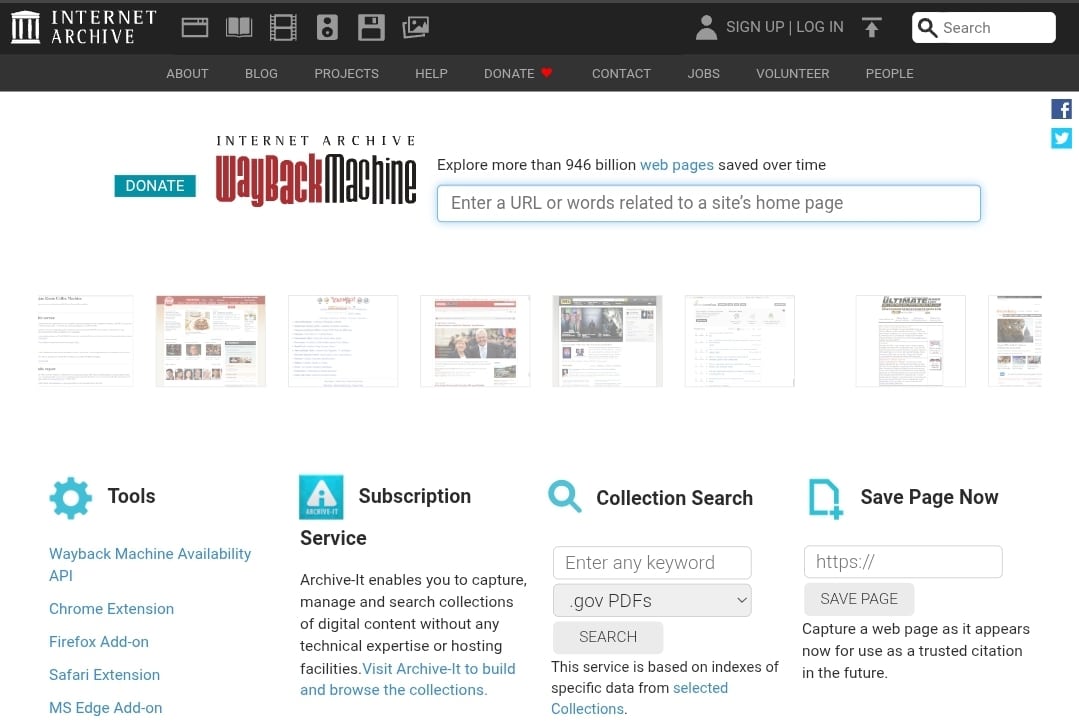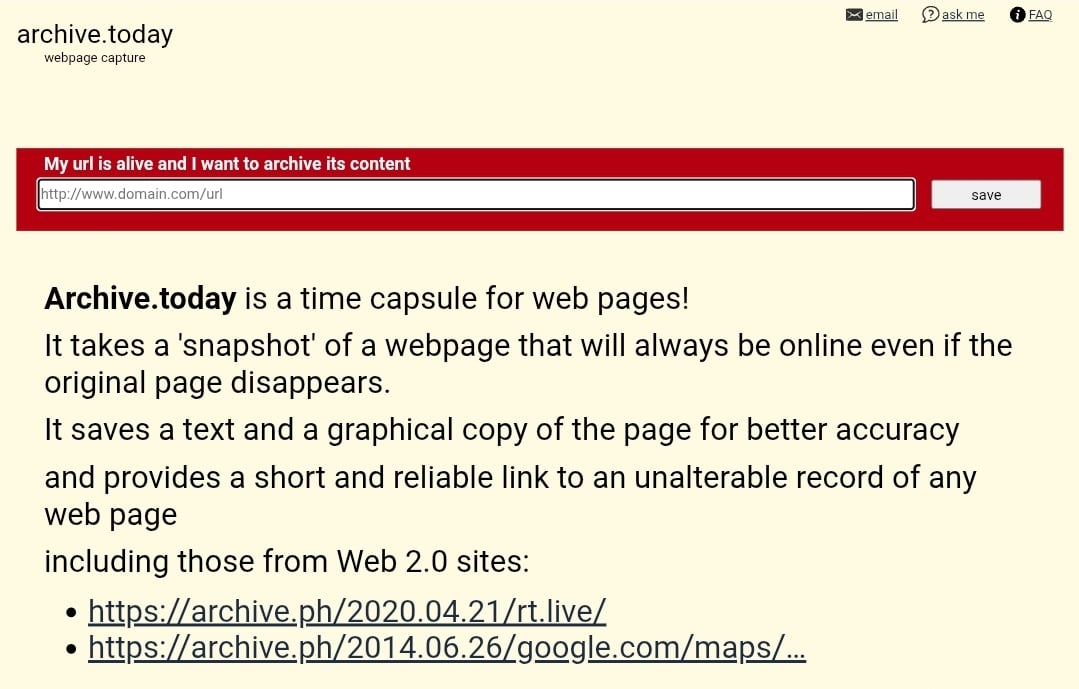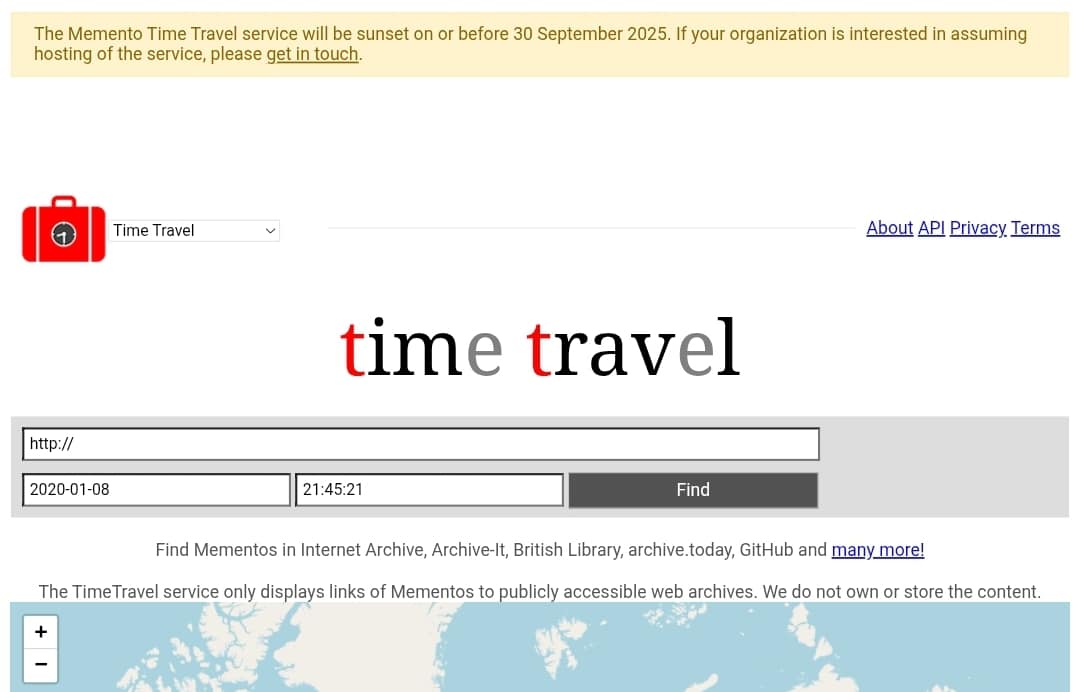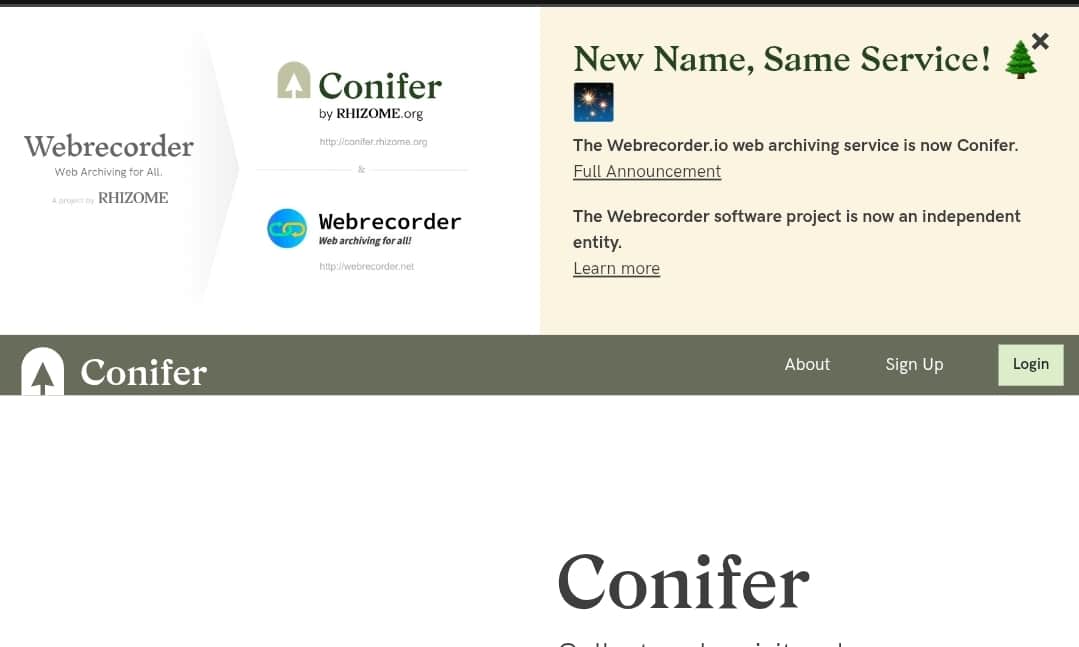
I’ve spent countless hours digging through old web pages, chasing content that disappeared years ago. The Wayback Machine has been my go-to for this, but lately, it’s started showing its limits. Some pages don’t load properly, interactive content breaks, and occasionally, it just takes forever to find what I need.
That’s when I decided to look beyond it. I wanted tools that could reliably capture snapshots, handle modern websites, and give me more flexibility. Over the past week, I tested five of the top Wayback Machine alternatives.
In this article, I’ll share my hands-on experience with each, from how they work to their strengths, weaknesses, pricing, and which ones are actually worth your time.
The Wayback Machine: Overview, features, and why i looked for alternatives

The Wayback Machine has been around for decades, and for a long time, it felt like a time machine for the internet. I could type in almost any URL and see what a website looked like years ago. For researchers, content creators, and even casual web explorers like me, it’s a remarkable resource. It’s part of the Internet Archive, which is essentially a massive digital library, and it’s completely free to use.
What I love about it is its sheer scale. Millions of websites are archived, going back to the 1990s in some cases. If a page existed online at some point, there’s a good chance the Wayback Machine captured it. I’ve used it to track old articles, recover deleted blog posts, and even fact-check content that disappeared from live sites. It’s saved me more times than I can count.
Some of the standout features include:
- Time-stamped snapshots – You can view a website as it appeared on a specific date.
- Searchable archives – Finding old URLs or versions of pages is pretty straightforward.
- Public accessibility – No login required; anyone can browse archived pages.
However, despite all its advantages, I began to encounter limitations. Modern websites are rarely static; they rely on JavaScript, interactive elements, and content that is often media-rich. The Wayback Machine often struggles to display these properly, leaving missing images, broken layouts, or unclickable buttons. Some pages simply don’t load at all.
Additionally, it can be slow when retrieving older snapshots, particularly for pages that have undergone significant updates over the years. That’s why I began searching for alternatives. I wanted tools that could handle both basic and advanced archiving, capture dynamic content, and offer features the Wayback Machine doesn’t.
Over the past week, I explored five of the top alternatives, testing them with the exact URLs to assess their performance in real-world scenarios. In the next sections, I’ll break down each tool: what it offers, its pros and cons, my experience using it, pricing, and whether it’s actually worth using.
1. Archive.today (Archive.is)

Archive.today is a web archiving tool designed to capture snapshots of web pages exactly as they appear at a given moment. Unlike the Wayback Machine, it can bypass robots.txt restrictions, making it possible to archive pages that might otherwise be blocked. The tool is known for its speed, simplicity, and the permanence of its archives, making it ideal for anyone who needs quick, reliable captures of web content.
Features
- Permanent Snapshots: Once archived, a page cannot be deleted, ensuring long-term access.
- Bypasses Robots.txt: Pages blocked on other platforms can still be captured here.
- Static and Interactive Views: Users can view both frozen and interactive versions of a page.
- Quick Archiving: Pages are saved almost instantly without waiting for processing.
Pros
- Reliable and Fast: Pages load quickly and completely.
- No Account Needed: Anyone can archive pages without signing up.
- Exact Preservation: Captures the page as it appears at that moment, including images and links.
Cons
- Minimal Interface: Lacks advanced tools for organization or bulk archiving.
- No Bulk Options: Pages must be archived individually.
- Limited Extra Features: No notifications or scheduling for repeated captures.
My experience
I tested Archive.today with a news article that had multiple updates. Within seconds, the page was archived perfectly. Every image, link, and embedded video worked, unlike the Wayback Machine, where some content often fails to load.
I also tried a page the Wayback Machine had trouble capturing due to dynamic elements, and Archive.today handled it flawlessly. The interface is intuitive and straightforward, so I didn’t have to spend time figuring out how to save pages.
Pricing
Archive.today is completely free. There’s no subscription or premium version. Just save the page and access it anytime.
Verdict
For anyone who needs fast, reliable snapshots of web pages, Archive.today is an excellent alternative to the Wayback Machine. It excels with dynamic content and frequent updates, even if it lacks advanced organizational tools.
2. Memento Time Travel

Memento Time Travel isn’t a single archive like the Wayback Machine; it’s an aggregator. It pulls archived versions of web pages from multiple sources, including the Wayback Machine, Archive.today, and other web archives. I was curious to see if it could make finding old versions of pages faster and more comprehensive. For anyone who wants a “one-stop shop” for historical web content, Memento promises just that.
Features
- Multi-Archive Search: Finds snapshots across various web archives in one place.
- Date-Based Navigation: Lets you pick a specific date to see the closest archived version.
- TimeMap Overview: Provides a visual timeline showing all available snapshots for a page.
- Browser Extensions: Make accessing archived pages directly from your browser easier.
Pros
- Aggregated Results: Saves time by checking multiple archives at once.
- Comprehensive: Increases the chance of finding older or missing snapshots.
- Date Flexibility: Lets you quickly compare different versions of a page over time.
Cons
- Dependent on Other Archives: Memento doesn’t store content itself; if the original archives fail, so does Memento.
- Interface Can Be Confusing: First-time users might find the timeline and options overwhelming.
- No Direct Archiving: You can view snapshots, but you can’t save new pages directly through Memento.
My experience
I tested Memento by searching for a blog post that had been removed from its live site. The aggregator pulled results from multiple archives, showing me snapshots I hadn’t found on the Wayback Machine alone. The visual timeline was particularly helpful; I could see exactly when pages were captured and easily jump between dates.
That said, I did notice some broken links because it relies entirely on the source archives. Still, for research or comparison purposes, Memento is highly efficient. It’s convenient when you want to check multiple snapshots quickly without visiting different archiving sites individually.
Pricing
Memento Time Travel is free. Since it doesn’t host content itself, there’s no subscription. All you have to do is enter the URL and explore the archives.
Verdict
Memento Time Travel is ideal if you require a comprehensive view of a page’s history across multiple archives. It won’t replace tools that allow direct archiving, but for tracking changes over time and cross-referencing versions, it’s a valuable addition to any researcher’s toolkit.
3. Perma.cc

Perma.cc is a web archiving tool created by the Harvard Library Innovation Lab, primarily aimed at academic and legal professionals. Its goal is simple: make sure the pages you cite today remain accessible tomorrow. Unlike the Wayback Machine or Archive.today, Perma.cc is built around creating permanent links for citations, so you never have to worry about a reference disappearing. I wanted to see if it could be just as useful for general archiving, beyond academic purposes.
Features
- Permanent Links: Generates a unique, stable URL for each archived page, ideal for citations.
- Organizational Accounts: Institutions can manage and track multiple archives efficiently.
- PDF Export: Captures pages in a format that’s easy to store or attach to documents.
- Browser Integration: Simplifies the process of archiving pages directly from your browser.
Pros
- Reliable for Citations: Guarantees that the page will remain accessible via the permanent link.
- Organizational Tools: Great for teams or institutions managing many archived pages.
- PDF and Link Options: Makes it easy to reference pages in papers or reports.
Cons
- Account Required: You need to create a free or institutional account to archive pages.
- Limited Free Tier: Free accounts have a cap on the number of pages you can archive per month.
- Not Ideal for Bulk Archiving: Best suited for individual pages rather than large-scale scraping.
My experience
I tested Perma.cc by archiving a few online news articles I wanted to reference in a project. Setting up an account was straightforward, and generating permanent links was fast. Each page looked exactly as it appeared when I saved it, and the PDF export was clean and professional.
One thing I noticed is that if you hit your monthly limit, you have to wait or upgrade, so it’s less flexible for heavy users. However, the ability to organize pages by projects or teams makes it ideal for anyone working on research, case studies, or academic writing. While it’s not designed for casual archiving, I found it invaluable when I wanted to make sure a reference would never break.
Pricing
Perma.cc offers a free tier with a monthly page archiving limit. For higher usage, they provide institutional plans tailored to the needs of organizations such as libraries, courts, and academic institutions. These plans offer additional features and higher limits, with pricing details available upon request.
Verdict
Perma.cc excels for anyone who needs permanent, citable web archives. While it’s not built for bulk or casual use, its reliability and organizational features make it a strong alternative to the Wayback Machine for academic, legal, or professional contexts.
4. Conifer (formerly Webrecorder)

Conifer is an open-source web archiving tool designed for capturing websites with high fidelity. Unlike many traditional archivers, Conifer can handle complex, interactive pages that include dynamic content, videos, and JavaScript elements. I was particularly curious to test it because I often run into sites that break or lose functionality when archived on the Wayback Machine. Conifer promises to preserve not just the page, but the full interactive experience.
Features
- High-Fidelity Capture: Preserves interactive elements, scripts, and media-heavy content.
- Curated Collections: Users can organize and share groups of archived pages.
- Open-Source and Free: Community-driven with transparency and customization options.
- Replay Options: Allows you to view archived pages exactly as they functioned live.
Pros
- Handles Complex Sites: Works well with JavaScript-heavy pages and dynamic content.
- Collections and Sharing: Makes it easy to organize related pages and share with others.
- Open-Source: No hidden restrictions, and you can host your own instance if needed.
Cons
- Learning Curve: Initial setup and interface can feel overwhelming for first-time users.
- Slower Archiving: Capturing highly interactive sites can take longer than simpler tools.
- Limited Free Storage: The hosted version has restrictions; larger projects may need self-hosting.
My experience
I tested Conifer with a few interactive sites, including a news portal with embedded videos and dynamic elements. Unlike the Wayback Machine, Conifer captured every video, dropdown, and interactive chart perfectly. Viewing the replay felt identical to browsing the live site.
I also tried creating a small collection of related pages, which made it easy to keep everything organized and accessible. The interface took a bit of getting used to, and archiving some pages was slower than I expected, but the quality of the captures made the wait worthwhile. For anyone archiving modern web content, especially sites heavy with scripts or embedded media, Conifer stands out.
Pricing
Conifer’s hosted service is free with limitations on storage and project size. For larger projects or advanced features, you can self-host the platform since it’s open-source.
Verdict
Conifer is the best option for archiving interactive, dynamic, or media-heavy sites. It requires a bit of patience and familiarity, but if your goal is high-fidelity web preservation, it’s unmatched. Compared to the Wayback Machine, it excels in keeping modern websites fully functional.
5. Stillio

Stillio takes a slightly different approach to web archiving. Instead of capturing interactive snapshots like Conifer, it focuses on automated screenshots over time, creating a visual timeline of any website. I wanted to test it because I often need to monitor changes on sites, and manually checking pages is tedious. Stillio promises automation, regular captures, and an easy way to track web changes visually.
Features
- Scheduled Screenshots: Automatically captures websites at regular intervals.
- Visual Timeline: Lets you see changes to a page over time in a chronological view.
- Cloud Storage: All screenshots are stored online for easy access and download.
- Integrations: Connects with apps like Slack or Dropbox to streamline workflow.
Pros
- Hands-Off Archiving: Once scheduled, you don’t have to remember to capture pages.
- Easy Change Tracking: The timeline makes it simple to spot updates or deletions.
- Professional Storage: Cloud-based storage keeps everything organized and accessible.
Cons
- Not Interactive: Screenshots can’t capture interactive elements or embedded media.
- Subscription Required: It’s a paid service, with a limited trial for testing.
- Limited Free Options: Free or low-tier plans only support a few sites or snapshots.
My experience
I tested Stillio by setting up automated captures for a news site and a blog I follow regularly. It was surprisingly easy to schedule daily snapshots, and the visual timeline made it simple to see exactly what had changed from one day to the next. I liked that I could download screenshots directly or integrate them with Slack for alerts, which is perfect if you need to monitor competitors, track website updates, or document changes for professional purposes.
However, unlike Archive.today or Conifer, I couldn’t interact with the pages. Videos, dropdowns, or dynamic scripts didn’t work in the screenshots. Still, for my goal of visually tracking changes, it was extremely effective.
Pricing
Stillio is a subscription-based service, starting at around $29 per month for basic plans. Higher tiers support more frequent captures, additional sites, and advanced integrations.
Verdict
If you want automated, visual tracking of websites rather than complete interactive archives, Stillio is a top choice. It’s ideal for professionals, marketers, or researchers who need to track changes without manually visiting pages daily. While it doesn’t replace full archiving tools, it complements them well by providing a clear, visual history.
Wrapping up
Testing these five Wayback Machine alternatives gave me a clearer understanding of what each tool can offer. Archive.today is fast and reliable for permanent snapshots, Memento Time Travel excels at aggregating multiple archives, Perma.cc ensures citations never break, Conifer captures complex, interactive pages in high fidelity, and Stillio makes tracking changes visually effortless.
No single tool does everything perfectly, but each has its strengths depending on your needs. Whether you’re a researcher, content creator, marketer, or casual web explorer, knowing which platform to use can save you time and frustration.
For me, combining these tools based on the type of content I’m archiving has become the most effective approach. Exploring alternatives to the Wayback Machine opened up new ways to preserve, track, and reference web content, making digital archiving more reliable and versatile than ever.








